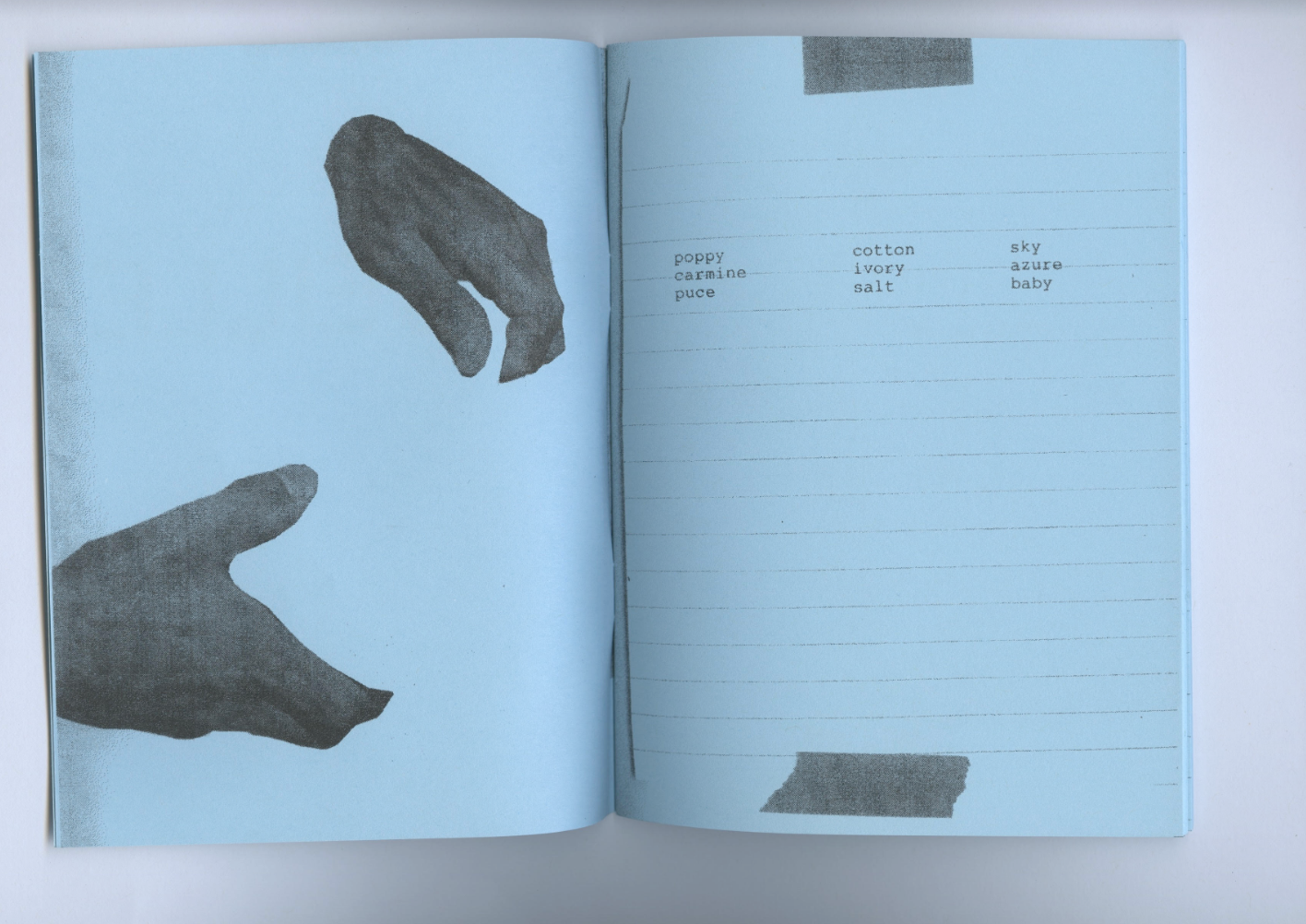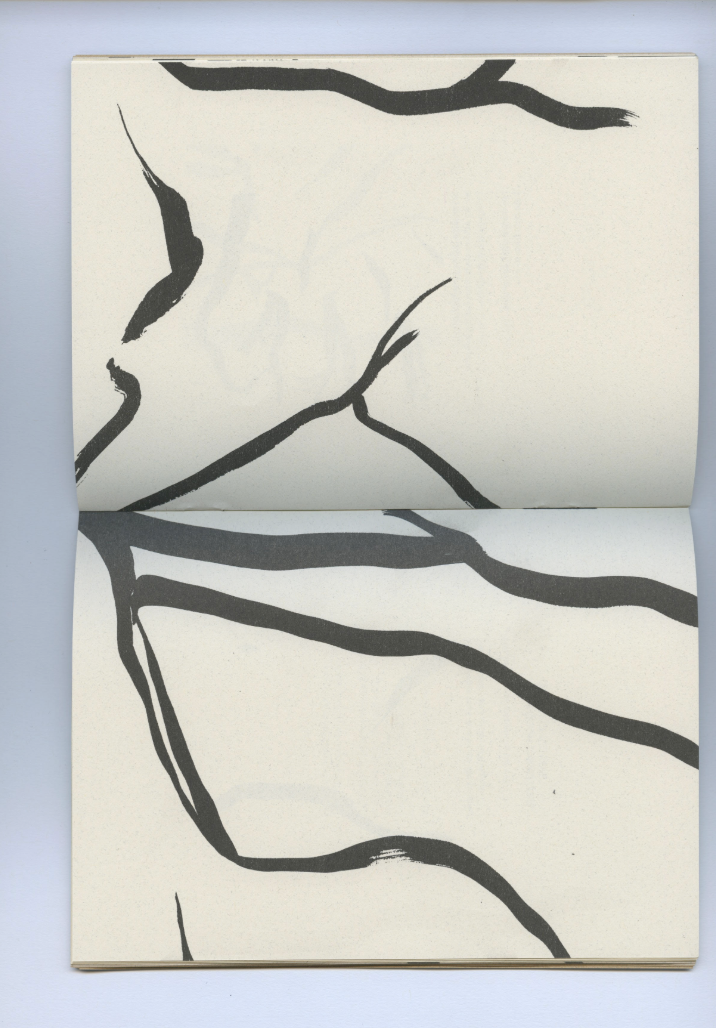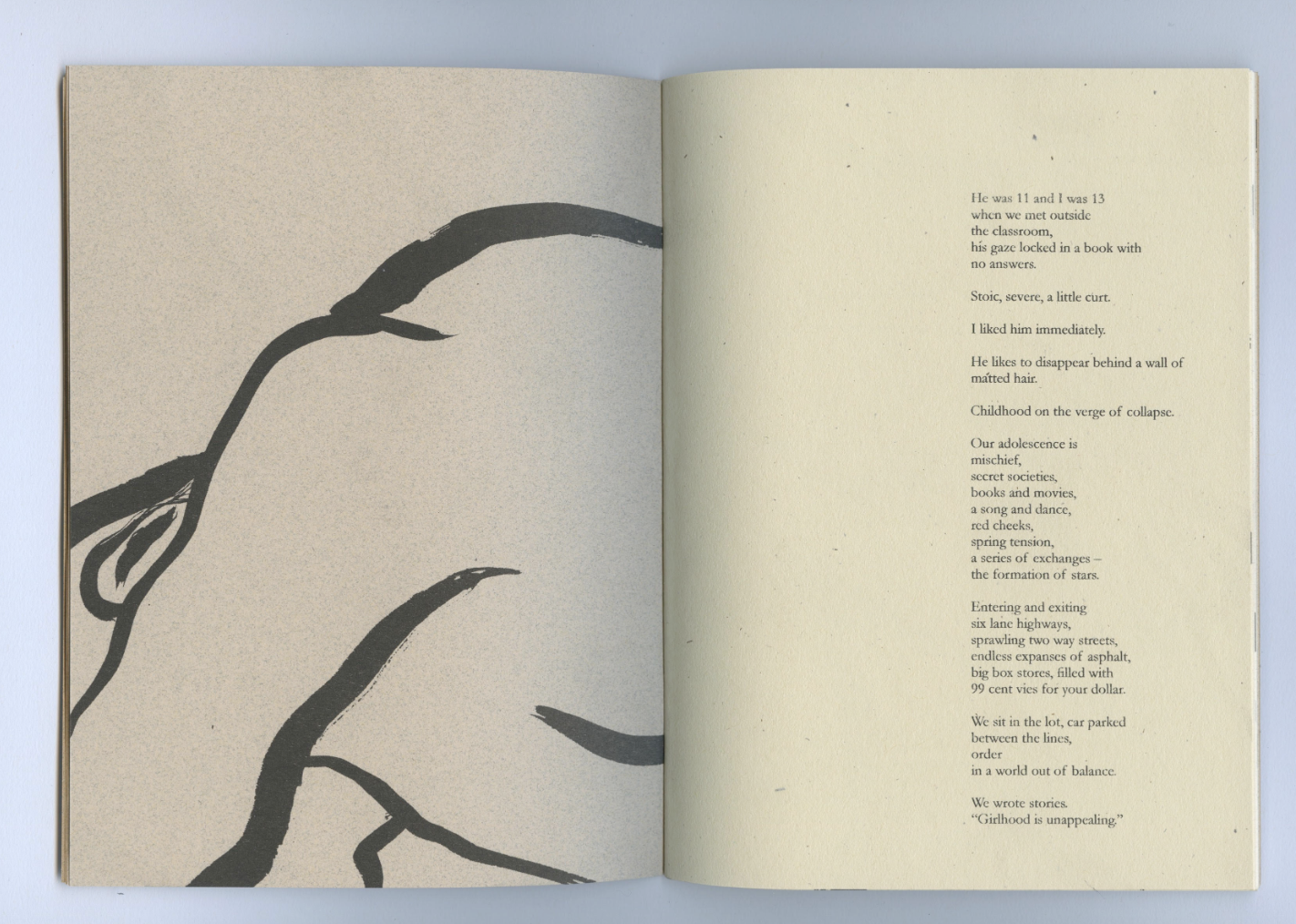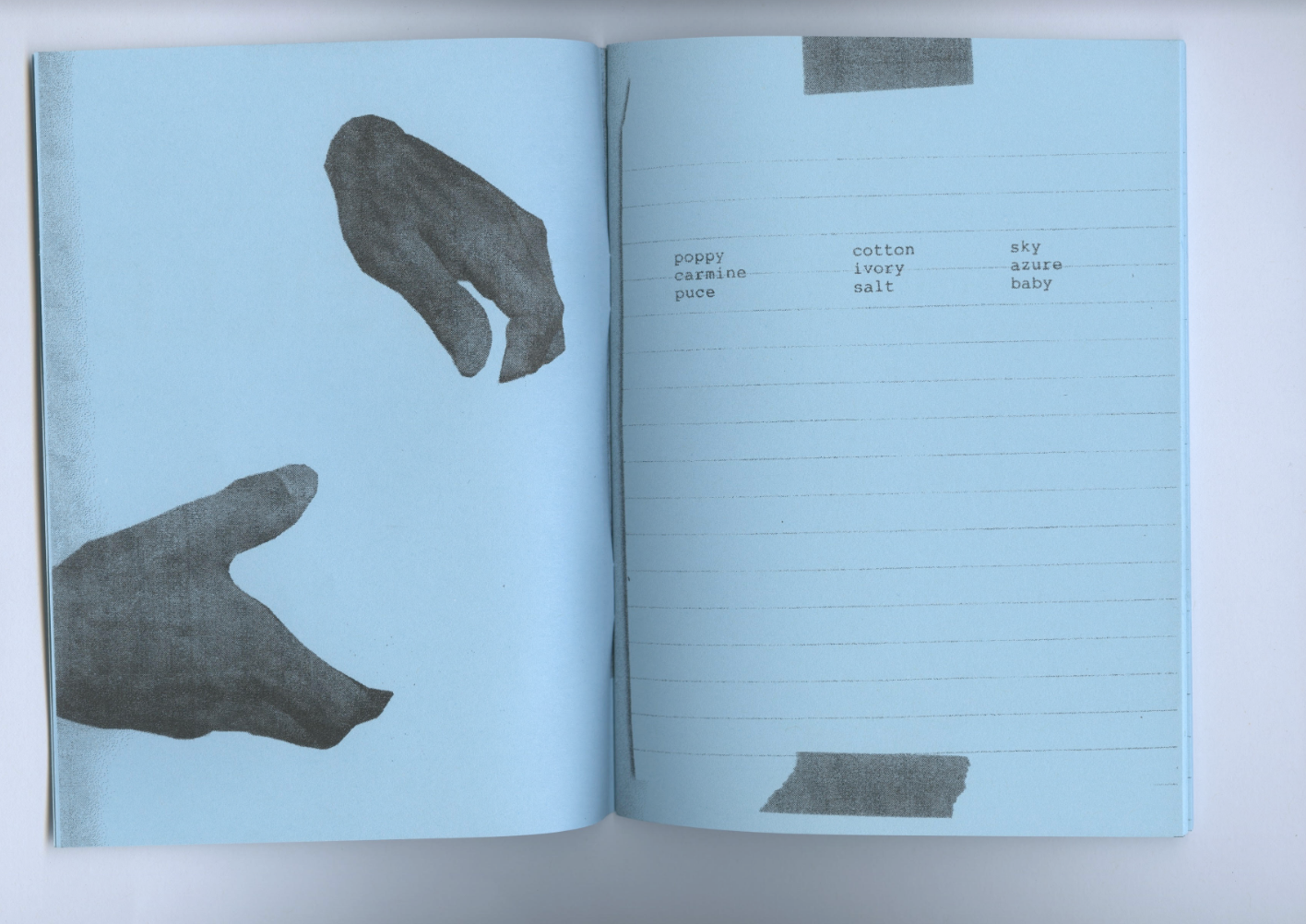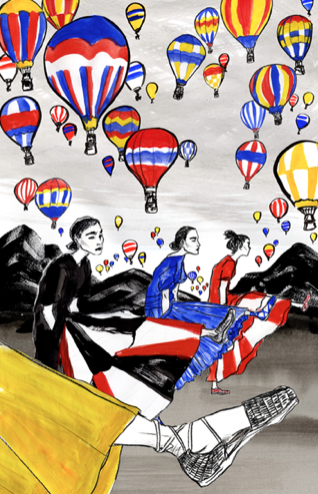TIFFANY LIN IN CONVERSATION WITH VI KHI NAO
VI KHI NAO: In your video presentation, you said at 3:33 that “as artists you have to come from an authentic place.” How do you define authentic here, Tiffany? And, what is an example of inauthenticity in an artist? When I think of authentic, I think of sincerity, meaning it arrives or derived from the heart.
TIFFANY LIN: I define authentic as something derived from a lived experience. Every creative endeavor should be produced from a place of honesty. Creating any type of cultural artifact should be done in earnest. The world is already too cluttered with lies manufactured by disingenuous and profit-driven motivations. Keeping your creative space true is an exercise in freedom.
Photo by Jeff Barnett-Winsby
In this particular video, the question was asked specifically in reference to the Illustration courses I am teaching this semester. Illustration is often spoken about as an entirely separate discipline from contemporary art. Maybe this happens because it’s perceived as being too commercial or a willing player in the capitalist machine. Or perhaps its subject matter deemed too trivial and visual execution frivolous and decorative. But if that is what speaks to the artist in question, and it offers an avenue for creative release, my role as an educator is to support and steer them through that independent journey. When I say inauthentic, a broad example is a creative brief from an art director that deadens your soul. It is something to be executed - a means to an end - and serves the client, but may not necessarily challenge the artist or consumer. There are those who are content with this relationship, but it does not align with my personal ideas of what it means to be an artist. In successful commercial projects, the artist has found positive symbiosis with the larger vision that matches their visual language.
On a personal note, I’ve taken on a few projects I didn’t care about or were misaligned with my moral values; it was very apparent in the outcome. I’m now in a position where I have more agency in the projects I choose to take on. And I understand that in itself is a type of privilege, to be able to perform outwardly in an “authentic” fashion as opposed to taking on a voice that is not my own.
(I don’t know if that made any sense).
VKN: (It does make sense) What were those projects, Tiffany? Could you describe them? What have you learned from that misalignment? And, could it have been prevented? If one were to arrive from a place devoid of necessary privilege? Could you foresee an artist be both capitalistic and authentic? Or are they paradoxical and oxymoronic?
TL: I worked on a few fashion-related projects where I was told to respond to explicit “target audiences” / “demographics” that were determined by the art director. Everything was based on market trends. At one point, I was told I drew “too much like a man” and that this would not do well in women’s apparel. I found this creative direction troubling as it suggested that women had a “natural” tendency toward a particular aesthetic, one of frills, curves, and maximalism. I find this view repulsive. Common sense should lead us to conclude that none of this is innate or specific to gender, rather companies have found ways to profit off of antiquated views of gender with bogus “for her” branding. Have you ever been frustrated by gendered marketing “for her,” where functional objects are embellished with extraneous accents because they think they’ll sell better? And that a young woman, seeing the male-counterpart-item, streamlined and plain, comes to understand her place in the world as an accessory. I take no issue with people who prefer this, but it should not be bound to gender.
This attitude can be prevented if we have art directors and creative people who can push beyond gender normativity and dare to think beyond profit margins. Yes, I think an artist can be both capitalistic and authentic, though I probably would probably keep them at arm’s length. Artists face the most difficult Faustian bargains. For some it does not sit well and completely disrupts their creative process. For others, the financial success outweighs the optics of “selling-out” and from a practical level, may allow them to live more comfortably and provide form themselves/their progeny in a better way. For others, fame, glory, and attainment of wealth is all they ever wanted.
VKN: In your bio, it’s written that “through drawing, writing, and performance, her [Tiffany Lin] work investigates the nebulous distinction between want, need, and desire in context of political and capitalist spectacles. What have you discovered, so far, about want, need, and desire? Has your investigation surprised you? Redefine your aesthetics? Or has it ever misguided you? What kind of growth do you imagine for a consumer of your work to experience through your investigation? Do you wish that they de-consume? Or overconsume?
TL: I’ve discovered that one of the unifying themes between want, need, and desire is hurt. Or a sense of loss, emptiness. Whether it is for want of food, water, shelter to the more surface desires such as luxury goods, there is a sense that without said object that the subject is lacking and incomplete. I specify political/capitalist spectacle because I think it’s important to contextualize my practice in the 21st century where the amount of advertising we consume is unfathomable. Codes are created to predict our behavior. The market wants to be our psychiatrist. They know are deepest insecurities and a greatest wish; if they don’t, they’ll try to manufacture it in the deepest recesses of your mind. These psychological operations are not new, but they have reached new levels of saturation with advances in technology and communication.
My investigation has surprised me but not in ways I anticipated. Many of my works are derived from formal/informal interviews with leading questions, and the impact of Donald Trump’s election in 2016 was palpable in people’s responses to what they “wanted” out of a President, or what they “needed” to happen to fulfill their lives. These conversations often turned ugly because there is a thread within the American psyche that suggests all good things come to those who work for it. Though that dream has proven to be a fallacy over and over again, I find that the working class (like my parents, who fully believe in the Dream) do not ever discredit the state or larger systems. An easier psychological solution to pivot their anger and resentment toward their fellow man. My initial response was to balk and grow angry, but I learned from this logic that our narratives of want are rooted in so much more than consumer goods and quality of life, but rather notions of agency that allows the ideal “American citizen” to fully self actualize. What is a citizen anyway?
I have been misguided for sure, mostly in that the conversations were almost always emotional in having to contend with heavy realities - drug addiction, food and housing insecurity - what could an artist truly offer to resolve these problems? Can a work of art feed the hungry? There are days where I think art is useless. Other days I think it is the only thing that will save and outlive us.
My hope is that people view my artwork and feel greater empathy toward others. That somehow, through the reinterpretation of public vs. private sector vernacular, people question their relationship to consumerism and nation. Yes, generic beauty pageant response but I believe in WORLD PEACE. Once people develop more genuine connections with one another they may ultimately “de-consume” material objects as interpersonal relations take priority, but that is not my explicit goal.
VKN: Your visually performative, “patriotic” chaplet “A Manual by Codes” is both tender and technical, visually ascetic and sharp, didactic and irreverent, and exhibits many shades of political and personal inquiries and it (possibly rhetorically) asks, “tell me, my sons and daughters what is it you hold dear? So if I may ask the book to ask you: tell me, Tiffany Lin, what is it you hold dear?”
TL: I hold dear the elements to which I belong. I like to remember we’re carbon made - my found family, blood family, strangers. When making the chaplet, I wanted to rethink justifications surrounding war and violence. When is sacrifice acceptable? What loss hurts the most and why? The book is a reminder that at the end of the day, you, like me, like her, like him, like they, like it - shit, piss, bleed, and will die. Mortality anchors the work.
VKN: Can you talk about this illustration? Can you talk to us about your process of creativity? From the seed of conception to its end product? What is the one thing that you have learned from the process? Or what would empower you to refrain? Or do you tackle all of your visual works with some impulsion and immediacy?
TL: This editorial work was created as a response to a Lifestyle Illustration assignment in graduate school. I chose to work with Hermes’ Resort 2017 line (here). Each work (illustration, performance, writing) starts with drawing as a meditative and experimental practice. In this case, since I was responding to a prompt, I was more cognizant of color palettes and visual ambiance that would not distract from the clothing and elevate it in a playful and appetizing way.
I first work in analogue media and scan each component for more creative flexibility when I transfer it to a digital platform. Especially when working with a client that may change their mind quickly about placement, colors, or nitpick angles and stray hairs, it’s nice to be able to edit the piece quickly without tearing your hair out about having to redo an entire painting from scratch.
Impulse and immediacy are words that resonate with me. There is something critical in that first mark - conviction and confidence become lost the more you belabor the form. My media of choice is ink, crayon, charcoal, and gouache. Textures are often done by hand and retain a feeling of a living, breathing image to an otherwise dead mark rendered soulless by digital software. However, integrating digital tools into illustration has allowed me to continue working in this manner while still being efficient in the way things are moved around. Think of it as constant digital collage.
VKN: You work in a variety of mediums (lithography, drawing, painting, performance, a census collector), which one could you live without? Meaning, which medium or medium of expression would make the engine of existence worthy of adding more fuel, spare parts, or appetite for posterity. I used to think art is dead, but when I sit with your work, I have arrived to a small conclusion that art doesn’t always have to be overarching or dramatic - that it could speak or excel in the language of subtlety. An excellent example of this is your chaplet/chapbook titled “BECOMING, a letter” - it’s very poetic, compassionate with an element of un-enslaved detachment, and massively encouraging in the sense, place, and its time of acceptance. Can you talk about this book? Can you talk about the design of the cover? Two circles in ochre(?) and two smaller circles connected by one line? Does it reflect or is it in conversation with this linguistic line, “Two necessary shifts in orbit.” And, could you talk more about the significance of this tenderness, “Darling, There are no lies between us, only nervous hesitation toward an awakening.”
TL: I can’t live without drawing - it is the foundation of everything I do. I’m a big fan of sketchbook experimentation. It is how I think out loud.
In terms of what is more has fallen out of use, I have not worked as a true printmaker (as in working collaboratively with another artist) in a few years. I realize I am better suited to executing my own projects. However, lithography taught me important life lessons about patience, process, consistency, and the art of failure.
The book is probably my most emotional and intimate work to date. I wrote the initial text in 2015 when my partner (at the time) was at a major psychological low in grappling with his gender dysphoria. I wrote the essay as a way to acknowledge his desire to transition from female to male, to live his life as a man. I remember him telling me that transitioning is an imperfect solution to one’s material reality.
The cover is a diagram of binary stars, meaning two stars that orbit around a central mass. Our universe is dominated by multiple star systems, meaning the stars are bound together by gravitational force, even after they die. From our vantage point, they appear as one star but are actually two (or more) in constant rotation. I think it is an apt metaphor for me and my ex-partner’s relationship. We still remain very close to this day.
It’s a relationship I have difficulty defining, especially in conventional (see: BASIC) predominantly heterosexual/straight spaces. How to describe a love that is so completely and utterly unconditional? To me it speaks of the power of queer love that transcends bodily reality. Yes, the diagram is in conversation with that line as the orbits never truly “shift” but they may grow further apart or closer together over time, sometimes transferring mass to the other.
That last line is about intuition and knowing. We separated in Philadelphia in the summer of 2016 and he left behind a letter apologizing for “lying” to me about his desire to transition. But I do not see it as a lie. I see him for who he is, who he desires to be. We both knew something was amiss but neither of us had the language or resources at the time to articulate what he needed to “awaken” and arrive at his true expression of self. We grew up together. He is my best friend. He is a much more joyous person following his transition and that has been an amazing experience to see.
VKN: If I may extract some practical wisdom from you, what is the best way to deal with economic hardship, Tiffany? If you could advise from an artist to another?
TL: I don’t have a good answer to this one. The best thing I can advise is to stay honest with yourself, surround yourself with good people (and I mean ACTUALLY GOOD PEOPLE - it will take time to intuit), keep creating work and follow what feels right. Your confidence will waver from time to time, that’s ok. Acknowledge that the path of an artist is difficult; it is not linear and therefore infinite in possibility. It is possibly the most overwhelming industry to be in. Yes, you’ll have to hustle. Know that some days you will have to compromise but always take care of yourself. Too much top ramen will destroy you. Couch surfing will eventually wear you down. When I was working five (stupid) jobs in San Francisco, a mentor kept telling me that “The sword is forged in the fire.” If I were to get really nitty gritty, I would say find a job that can get you by but never lose focus. Wait tables, gut the gig economy for whatever it's worth, pawn your jewelry, roll the dice - but remember to nourish and feed your creative process. Persist!!
VKN: If Andy Warhol kept your most brilliant art piece and then informed you later that he lost it when in fact he didn’t, would you shoot him with a pistol like Valerie Solanas? What would you do to him for betraying you or leading you on? In other words, what is the best enactment of (nonchalant) revenge on another? Another artist? If there is such a thing as a casual, nonchalant venom.
TL: Yes, I would shoot him. But maybe that would be too easy.
Perhaps it would be more poetic to concoct a more elaborate plot, a long term defamation campaign.
But in more seriousness, I’d probably let it go. Revenge and bitterness take up too much mental energy. I’d rather redirect my energy into happier things. But therein lies the nonchalant revenge you speak of - achieving success despite the setbacks and thievery!
VKN: Which one would you choose? A door a window? In other words, what is your ideal romantic love? TL: Door. Clear entrance and exit strategy.
Two people coming together and understanding the terms of engagement.
Secure infrastructure.
VKN: Do you don’t think the window has the same clear exit strategy?
TL: It involves too much glass shattering.
VKN: What is your favorite kind of sofa? Or what is the sexist art object you have ever laid eyes on? In your eyes, what is the best Asian artist working on any medium today? This is non-sequitur, but I was preparing for this interview and I accidentally studied this other woman’s art/design (http://www.tiflindesign.com) who shared the same first and last name with you (lol), and I did wonder for a second if you have ever reached out to other Tiffany Lins in the world and ask if they are willing to collaborate with you on an artistic feat/project?
TL: [ UPDATE! ] Since conducting this interview, I caved and bought a sofa off of craigslist. It’s very modern and has shaker furniture elements. It is not very practical for sleeping on but is firm and keeps me alert while I read.
Sexist art object… is everywhere… I can’t decide. Am I supposed to sit on it?
Haha, yes, down the line I would like to create a video series around “common” names, mostly among 1st and 2nd generation Americans - popular combinations like Tiffany Lin or Christine Lee, Grace Kim, Maria Rodriguez, Andrea Gutierrez, etc. I would have them face the camera and say “My name is [INSERT NAME HERE] and I am a public menace.” My twin is named Tiffany Lin, she is 5 days older than me and grew up in the same neighborhood. She currently works as a nurse. Our parents are derived from the same practical Taiwanese stock, giving us names that were easy to pronounce and would allow us to assimilate more easily into American society.
Best Asian artist… Mel Chin is a pretty cool dude.
Tiffany Lin is an interdisciplinary artist, educator, and wordsmith. Her projects investigate nebulous distinctions between want, need, and desire in context of capitalist spectacle and corporeal intimacy. She holds an MFA from the Maryland Institute College of Art in Illustration Practice and a BA in Gender & Women’s Studies and Psychology from the University of California, Berkeley. Lin currently lives and works in Las Vegas, NV where she joins the Department of Art at the University of Nevada, Las Vegas.
VI KHI NAO is the author of Sheep Machine (Black Sun Lit, 2018) and Umbilical Hospital (Press 1913, 2017), and of the short stories collection, A Brief Alphabet of Torture, which won FC2’s Ronald Sukenick Innovative Fiction Prize in 2016, the novel, Fish in Exile (Coffee House Press, 2016), and the poetry collection, The Old Philosopher, which won the Nightboat Books Prize for Poetry in 2014. Her work includes poetry, fiction, film and cross-genre collaboration. Her stories, poems, and drawings have appeared in NOON, Ploughshares, Black Warrior Review and BOMB, among others. She holds an MFA in fiction from Brown University, where she received the John Hawkes and Feldman Prizes in fiction and the Kim Ann Arstark Memorial Award in poetry.































